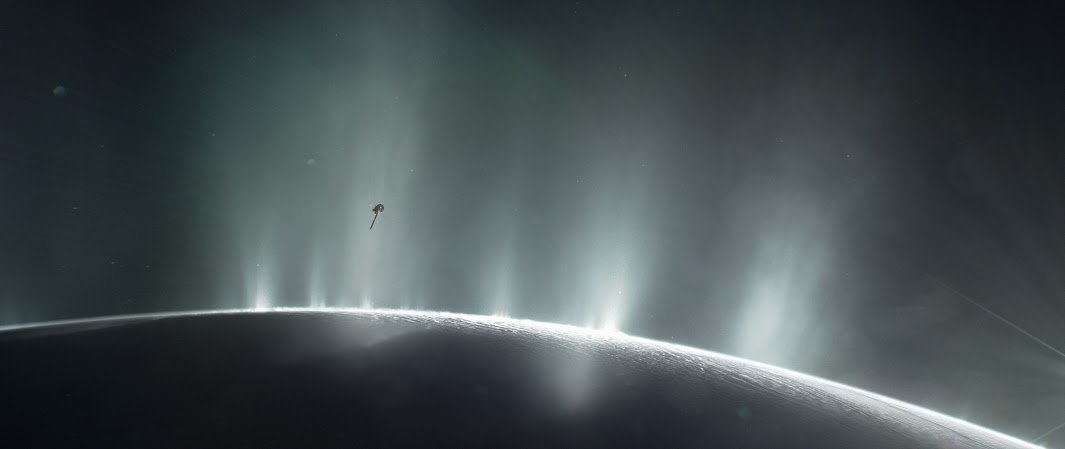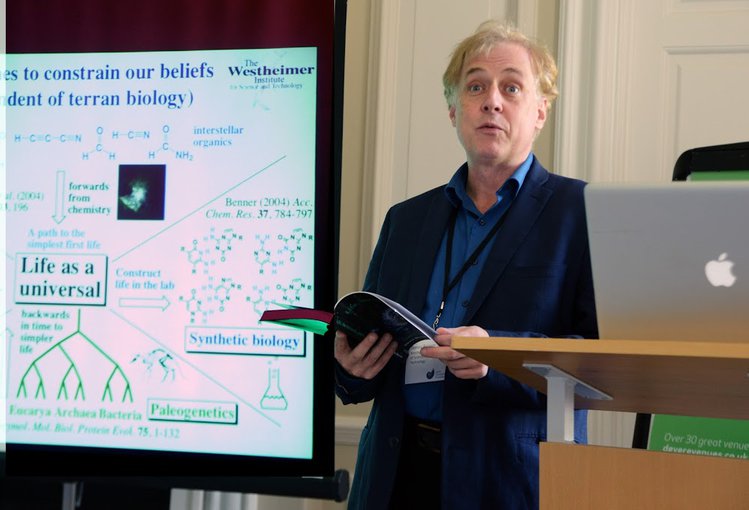
July 6, 2017
Feature Story
A Big Repeating Molecule May Be What Defines Life
Such a structure could be detected on other worlds.
As NASA inches closer to launching new missions to the Solar System’s outer moons in search of life, scientists are renewing their focus on developing a set of universal characteristics of life that can be measured.
There is much debate about what might be considered a clear sign of life, in part, because there are so many definitions separating the animate from the inanimate.
NASA’s prospective missions to promising spots on Europa, Enceladus and Titan have their individual approaches to detecting life, but one respected voice in the field says there is a better way that’s far less prone to false positives.
Noted chemist and astrobiologist Steven Benner says life’s signature is not necessarily found in the presence of particular elements and compounds, nor in its effects on the surrounding environment, and is certainly not something visible to the naked eye (or even a sophisticated camera).

Artist impression of NASA's Cassini spacecraft dives through the plume of Saturn's moon Enceladus in 2015.Image credit: NASA/JPL-Caltech/Space Science Institute.
Rather, life can be viewed as a structure, a molecular backbone that Benner and his group, Foundation for Applied Molecular Evolution (FfAME), have identified as the common inheritance of all living things. Its central function is to enable what origin-of- life scientists generally see as an essential dynamic in the onset of life and its increased complexity and spread: Darwin evolution via transfer of information, mutation and the transfer of those mutations.
“What we’re looking for is a universal molecular bio-signature, and it does exist in water,” says Benner.
“You want a genetic molecule that can change physical conditions without changing physical properties — like DNA and RNA can do.”
Looking for DNA or RNA on an icy moon, or elsewhere would presuppose life like our own — and life that has already done quite a bit of evolving. A more general approach is to find a linear polymer (a large molecule, or macromolecule, composed of many repeated subunits, of which DNA and RNA are types) with an electrical charge. That, he said, is a structure that is universal to life, and it can be detected.
As described in a recent paper that Benner’s group published in the journal Astrobiology: “the only molecular systems able to support Darwinian information are linear polymers that have a repeating backbone charge. These are called ‘polyelectrolytes.’ These data suggest that polyelectrolytes will be the genetic molecules in all life, no matter what its origin and no matter what the direction or tempo of its natural history, as long as it lives in water.”
Through years of experimentation, Benner and others have found that electric charges in these crucial polymers, or “backbones,” of life have to repeat. If they are a mixture of positive and negative charges, then the ability to pass on changing information without the structure itself changing is lost.

Steven Benner, director of the Foundation for Applied Molecular Evolution (FfAME).Image credit: SETI.
And as a result, Benner says, detecting these charged, linear and repeating large molecules is potentially quite possible on Europa or Enceladus or wherever water is found. All you have to do is expose those charged and repeating molecular structures to an instrument with the opposite charge and measure the reaction.
James Green, director of NASA’s Planetary Sciences division, sees values in this approach.
“Benner’s polyelectrolyte study is fascinating to me since it provides our scientists another critical discussion point about finding life with some small number of experiments,” he says.
“Finding life is very high bar to cross; it has to metabolize, reproduce, and evolve — all of which I can’t develop an experiment to measure on another planet or moon. If it doesn’t talk or move in front of the camera we are left with developing a very challenging set of instruments that can only measure attributes. So polyelectrolytes are one more to consider.”
Benner has been describing his universal molecular bio-signature to leaders of the groups competing for New Frontiers missions, which fill the gap between smaller Discovery missions and large flagship planetary missions. It’s taken a while but due to his efforts over several years, he notes that interest seems to be growing in incorporating his findings. In particular, Chris McKay a prominent astrobiologist at NASA’s Ames Research Center and a member of one of the New Frontiers Enceladus proposal teams, says he thinks there is merit to Benner’s idea.

Radar images from NASA's Cassini spacecraft reveal many lakes on Titan's surface, some filled with liquid hydrocarbons, and some appearing as empty depressions.Image credit: NASA/JPL-Caltech/ASI/USGS.
“The really interesting aspect of this suggestion is that new technologies are now available for sequencing DNA that can be generalized to read any linear molecule,” McKay writes in an email.
In other words, they can detect any polyelectrolytes.
Other teams are confident that their own kinds of life detection instruments can do the job. Morgan Cable, deputy project scientist of the Enceladus Life Finder proposal, she says her team has great confidence in its four-pronged approach. The package includes instruments like mass spectrometers able to detect large molecules associated with life; measurements of energy gradients that allow life to be nourished; detection of isotopic signatures associated with life; and identification of long carbon chains that serve as membranes to house the components of a cell.
“Not one but all four indicators have to point to life to make a potential detection,” Cable says.
NASA is winnowing down 12 proposals by late this year, so, Benner’s ideas could play a role later in the process as well.
NASA’s goal is to select its next New Frontiers mission in about two years, with launch in the mid-2020s. The Europa Clipper orbiter mission is tentatively scheduled to launch in 2022, but its companion lander has been temporarily scrubbed by the Trump administration. Nonetheless, NASA put out a call last month for instruments that might one day sample the ice of Europa. Benner is once more hoping that his theory of polyelectrolytes as the key to identifying life in water or ice will be considered and embraced.